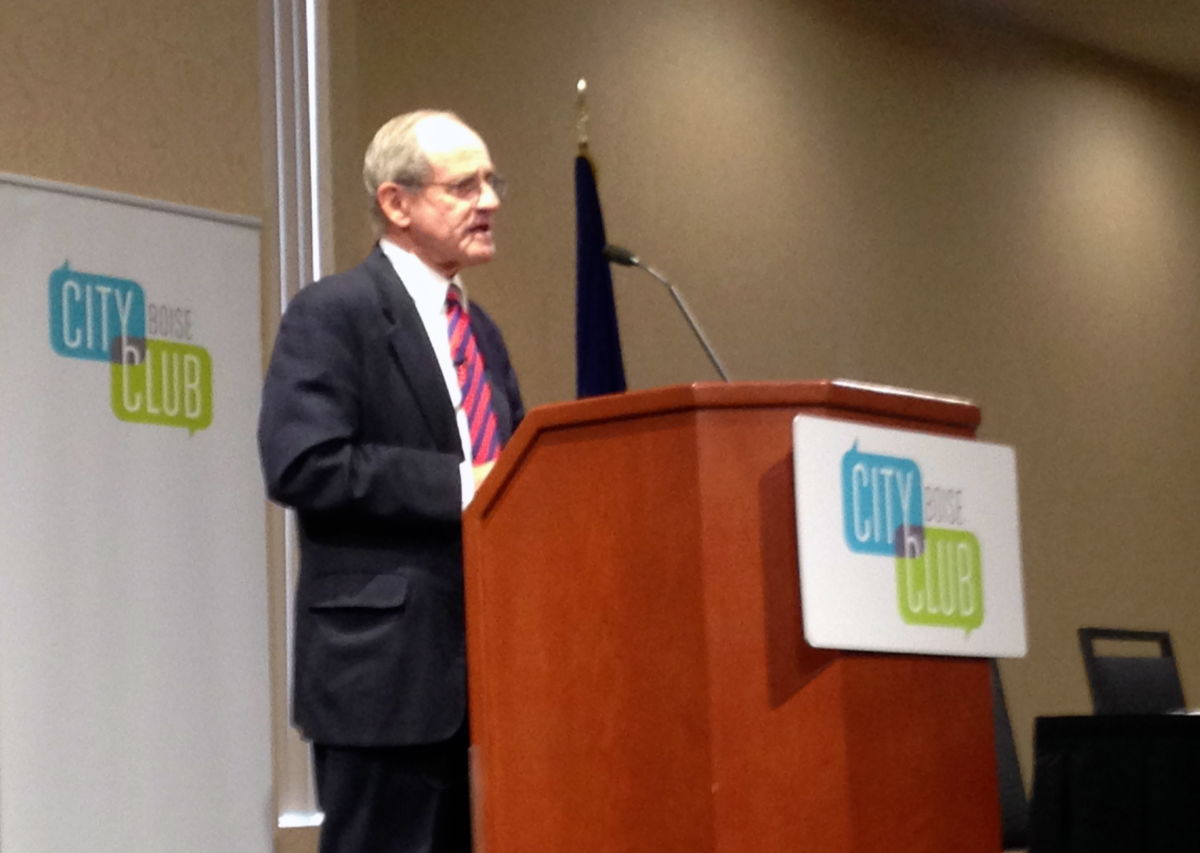After publishing my series looking at Idaho’s 2006 tax overhaul — and its effects on K-12 spending — I had a Twitter follower suggest another way of looking at the numbers.
He suggested looking at school district funding, and whether the districts have gained or lost ground over the past decade. He suggested adjusting the 2006 spending for inflation, accounting for the 19.37 percent increase in the Consumer Price Index.
Here’s what I found when I ran the numbers.
Losing ground. Eighty-six school districts actually lost ground from 2006 to 2016, when budgets are adjusted for inflation.
And for 53 districts — nearly one half of the state’s 115 districts — the losses were particularly precipitous: a funding decrease of 10 percent or more, when funding is adjusted for inflation.
The biggest losses were found in North Idaho’s tiny Avery district (45.8 percent), Glenns Ferry (29.7 percent), Culdesac (25.4 percent) and Salmon (25.1 percent). These four far-flung districts have at least one important thing in common: They operate on a four-day school week. One defining characteristic in Idaho education over the past decade has been the proliferation of four-day school districts. Many rural administrators and trustees have embraced this change — and costs were one consideration. For most districts, however, the shift to a four-day calendar has yielded only modest cost savings.
Not surprisingly, the list of districts that lost ground over the past decade includes 39 of Idaho’s 43 four-day districts.
However, this list also includes some of the state’s urban districts: Boise (down 6.2 percent), Pocatello-Chubbuck (down 6.2 percent), Lewiston (down 9.2 percent) and Idaho Falls (down 11.7 percent).
The “gainers.” When budgets are adjusted for inflation in the Vallivue School District, funding increased by 53.5 percent over the past decade.

That might sound like a windfall, but consider this: In fall 2015, Vallivue’s enrollment grew to 8,176, up 47.3 percent from a decade ago.
Vallivue heads the list of 27 districts that gained ground in funding through the recession — even when the numbers are adjusted for inflation. Among the other top “gainers:” Teton County (up 51.9 percent), Middleton (up 39.7 percent) and Kuna (up 30.3 percent).
Another not-surprising trend: Teton County, Middleton and Kuna have also experienced big enrollment increases over the past decade, increases of at least 25 percent. Enrollment hotbeds such as West Ada and Bonneville also made the list of gainers.
But this is how the state’s funding formula is designed to work. Money is supposed to follow students. Even though the funding is based on average student attendance, not enrollment, growing districts will receive a larger share of the state’s dollars — at the expense of districts that are losing students.
The bottom line. When K-12 funding is adjusted for inflation, the statewide spending did increase — however slightly. The increase was 1.1 percent. However, this increase did not keep up with a decade of overall enrollment growth.

This math exercise probably won’t change too many minds about the events of August 2006 — and the Legislature’s controversial decision to eliminate $260 million of property taxes for K-12, while boosting sales taxes by $210 million. As I reported last month, former Gov. Jim Risch still is adamant that his plan provided Idahoans with needed property tax relief — and he’s hardly alone in this assessment. Critics maintain that the plan left school funding susceptible to the vagaries of the sales tax, and the unforeseen Great Recession.
But the inflation-adjusted numbers provide a way of looking at what really happened in school funding over this past turbulent decade. It’s a complicated topic that I hope to examine more closely. These tables provide a starting point.
To see how your district fared, download our table here.
